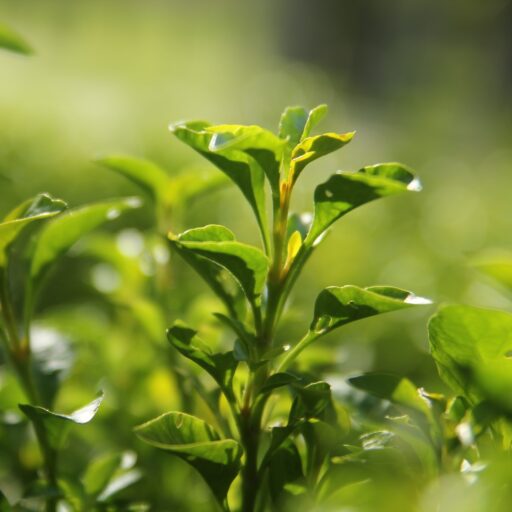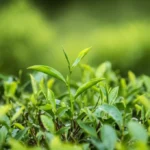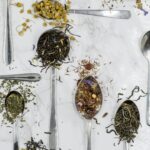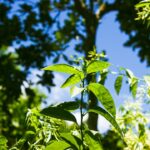Support our educational content for free when you purchase through links on our site. Learn more
Tea Plant Growth Stages and Timeline: 7 Key Phases You Must Know 🌱 (2025)
Have you ever wondered what it takes for a humble tea seed to transform into the fragrant leaves that fill your teacup? The journey from seed to sip is a fascinating blend of nature’s patience and a grower’s dedication. At Growing Teas™, we’ve spent years nurturing Camellia sinensis plants and decoding every stage of their growth. Spoiler alert: it takes about three years before you can harvest your first flush, but every phase along the way holds secrets that impact flavor, yield, and health benefits.
In this article, we’ll walk you through the 7 essential growth stages of the tea plant, reveal how climate and soil shape its development, and share expert tips to optimize your harvest. Plus, we’ll explore global harvest timelines that explain why teas from Darjeeling taste so different from Assam or Taiwan. Ready to unlock the full story behind your favorite brew? Let’s dive in!
Key Takeaways
- Tea plants progress through 7 critical growth stages, from seed germination to harvesting readiness, each influencing leaf quality and yield.
- Patience is key: it typically takes 3–4 years for a tea plant to mature enough for harvest.
- Soil acidity and climate profoundly affect growth and flavor, with ideal soil pH between 4.5 and 6.0 and moderate temperatures preferred.
- Pruning and proper watering are essential to maintain plant health and encourage new flushes.
- Global harvest seasons vary widely, shaping the flavor profiles of teas worldwide.
- Understanding the science behind leaf chemistry at different growth stages enhances appreciation and guides cultivation practices.
Ready to start growing your own tea or deepen your knowledge? Keep reading for detailed timelines, expert advice, and fascinating insights from the tea fields!
Table of Contents
- ⚡️ Quick Tips and Facts About Tea Plant Growth
- 🌱 Understanding Tea Plant Growth: A Botanical Background
- 🌿 The 7 Essential Tea Plant Growth Stages Explained
- 1. Seed Germination: The Very First Sprout
- 2. Seedling Development: Nurturing Young Tea Plants
- 3. Vegetative Growth: Leaf and Shoot Expansion
- 4. Root System Maturation: The Hidden Foundation
- 5. Bud Formation: Preparing for Harvest
- 6. Flowering Stage: The Tea Plant’s Blooming Moment
- 7. Harvesting Readiness: Timing the Perfect Pick
- ⏳ Tea Plant Growth Timeline: From Seed to Sip
- 🌍 How Climate and Soil Affect Tea Plant Growth Stages
- 🛠️ Expert Tips for Optimizing Tea Plant Growth and Yield
- 🍃 Common Challenges and Pest Management During Growth
- 🔬 The Science Behind Tea Leaf Quality and Growth Stages
- 📅 Global Tea Harvest Timelines: When and Where Tea Thrives
- 📚 Recommended Reading and Resources for Tea Growers
- ❓ Frequently Asked Questions About Tea Plant Growth
- 🔗 Reference Links and Scientific Sources
- 🎉 Conclusion: Mastering the Art of Tea Plant Growth
Hello fellow tea lovers!
Welcome to the Growing Teas™ family. We’re a team of passionate growers, and let’s be honest, complete tea fanatics. We’ve spent years with our hands in the soil, nurturing the magnificent Camellia sinensis from a tiny seed into a flourishing bush. And today, we’re spilling the tea—literally!—on the entire journey.
Ever looked at your morning cuppa and wondered about the incredible life story of the leaves floating within? How long did they take to grow? What secrets do they hold? Well, you’re in for a treat. We’re about to embark on a fascinating journey through the tea plant’s life, from its first breath to its final, flavorful steep.
⚡️ Quick Tips and Facts About Tea Plant Growth
In a hurry? Here’s the steep-by-steep summary of what you need to know about the life of a tea plant.
- Patience is a Virtue 🌱: Growing a tea plant from seed is a long game. Germination alone can take 4-8 weeks, and you won’t be harvesting leaves for your own brew for about three years.
- It’s All in the Family 👨👩👧👦: All “true” teas—black, green, white, oolong, and pu-erh—come from the same species: Camellia sinensis. The incredible variety in your cup is all thanks to processing differences after harvest.
- Acid Lovers Unite! 🍋: Tea plants are picky about their soil. They thrive in acidic, well-draining soil, ideally with a pH between 4.5 and 6.0. Think of them as the blueberry’s beverage-making cousin!
- Just the Tip-Top ✨: For the best flavor, you only harvest the tender, new growth at the very top of the branches. This usually means the top two leaves and a bud, often called a “flush.”
- Pruning for Perfection ✂️: In the wild, a tea plant can grow into a 16-meter (52-foot) tree! On farms, we prune them to waist height. This isn’t just for easy picking; it encourages the plant to produce more of those delicious new shoots.
- Location, Location, Location 🗺️: While native to East Asia, tea is grown worldwide. The environment—altitude, rainfall, and temperature—dramatically impacts the final flavor. Higher altitudes often mean slower growth and more complex flavors.
🌱 Understanding Tea Plant Growth: A Botanical Background
Before we dive into the nitty-gritty stages, let’s get properly introduced to our star player: Camellia sinensis. This isn’t just any plant; it’s the source of the world’s second most consumed beverage, right after water.
There are two main varieties you’ll hear about:
- Camellia sinensis var. sinensis: A smaller-leaf variety from China that thrives in cooler, higher altitudes. It’s the parent of most of our delicate green and white teas.
- Camellia sinensis var. assamica: A larger-leaf variety discovered in the Assam region of India. It loves hot, rainy climates and gives us our bold, malty black teas.
As the experts in the #featured-video point out, this evergreen shrub is surprisingly hardy, capable of growing in USDA zones 7B through 10. While commercial farms often plant in full sun to maximize growth, for the home grower, partial shade is actually best to protect the leaves. They love moist, well-drained soil and, like many of us, don’t enjoy having “wet feet,” which can lead to root rot.
Now, are you ready to see how this remarkable plant goes from a humble seed to your favorite morning ritual? Let’s get growing!
🌿 The 7 Essential Tea Plant Growth Stages Explained
Watching a tea plant mature is a lesson in patience and wonder. Each stage is a critical step towards creating the perfect leaf. Here at Growing Teas™, we’ve guided countless plants through this journey, and it never gets old.
1. Seed Germination: The Very First Sprout
It all begins with a seed. Tea seeds are notoriously tricky; they lose viability quickly, so freshness is key.
- The Soak: The process starts with a good soak in water for 24-48 hours. This softens the hard outer shell and wakes up the embryo inside. Pro tip: the seeds that sink are generally the most viable!
- The Wait: After soaking, the seeds are placed in a warm, moist environment. Now comes the hard part… waiting. Germination is not a speedy process; it can take anywhere from four to eight weeks, sometimes even longer, for a tiny white root to emerge. It’s a true test of a grower’s patience!
2. Seedling Development: Nurturing Young Tea Plants
Once the seed has sprouted, it enters the fragile seedling stage. This is the plant’s infancy, where it’s most vulnerable.
- First True Leaves: After the initial root appears, a green shoot will push its way upward, eventually unfurling its first few leaves. This is a magical moment!
- Tender Loving Care: Young seedlings need protection from harsh, direct sun and frost. We keep them in partially shaded spots and ensure their soil stays consistently moist but never waterlogged. Overwatering is a common mistake that can lead to root rot. This “childhood stage” is all about building a strong foundation for future growth.
3. Vegetative Growth: Leaf and Shoot Expansion
This is the tea plant’s teenage phase—all about growth, growth, and more growth! For the first two to three years, the plant focuses its energy on getting bigger and stronger.
- Branching Out: The single stem begins to develop lateral branches, creating the bushy structure we recognize.
- Energy Production: The leaves are working hard, performing photosynthesis to create the sugars that fuel the plant’s expansion. During this time, we don’t harvest any leaves. The goal is to let the plant establish itself fully. A premature harvest can stunt its long-term growth.
4. Root System Maturation: The Hidden Foundation
What you see above ground is only half the story. Beneath the surface, an intricate and powerful root system is developing.
- The Anchor: A strong taproot grows deep into the soil, anchoring the plant and searching for water, especially during dry spells.
- Nutrient Network: A web of smaller feeder roots spreads out, absorbing the essential water and nutrients from the soil that are vital for healthy leaf production. A healthy root system is the secret to a resilient and productive tea bush.
5. Bud Formation: Preparing for Harvest
After about three years of patient cultivation, the magic moment approaches. The plant is mature enough to begin producing the coveted “flushes”—the new shoots that will become tea.
- The Flush: A flush is typically composed of a terminal bud and the top two or three youngest, most tender leaves. These new shoots are bright green and soft to the touch.
- Nature’s Timing: The plant will produce new flushes every 7 to 15 days during the growing season. This is when the real work of a tea grower begins, as timing the harvest is everything.
6. Flowering Stage: The Tea Plant’s Blooming Moment
Yes, tea plants have flowers! In the autumn, a mature plant will produce delicate, white, fragrant blossoms with bright yellow centers.
- A Beautiful Sight: While lovely, on a commercial tea farm, the flowers are often a secondary concern.
- Energy Diversion: As the video at #featured-video explains, flowering and producing seeds takes a lot of energy. To ensure the plant directs all its resources into producing high-quality leaves, bushes are often pruned in a way that discourages heavy flowering.
7. Harvesting Readiness: Timing the Perfect Pick
A tea plant is considered mature and ready for regular harvesting around its third or fourth year. From this point on, a well-cared-for bush can remain productive for 50 to 100 years, or even longer!
- The Plucking Table: Through careful pruning, the bush is shaped into a flat-topped “plucking table” about waist-high. This makes harvesting efficient and encourages the growth of more shoots.
- The Art of Plucking: Harvesting is done by hand, gently plucking the fresh flushes. The timing and skill of the pluck are crucial for both the quality of the tea and the long-term health of the plant.
⏳ Tea Plant Growth Timeline: From Seed to Sip
So, what does this all look like on a calendar? The journey from a tiny seed to your teacup is a long and beautiful one. Here’s a simplified timeline to visualize the process.
| Growth Stage | Average Duration | Key Milestones & Activities |
|---|---|---|
| Seed Germination | 4 – 8 weeks | Soaking seeds, waiting for the first root to emerge. ✅ Patience is essential! |
| Seedling Stage | 6 – 12 months | First true leaves appear. Requires protection from harsh sun and frost. |
| Juvenile/Vegetative | 2 – 3 years | Rapid growth of leaves, stems, and roots. No harvesting. Focus on shaping the plant through formative pruning. |
| First Harvest | Year 3 | The plant is mature enough for a light, careful harvest. The leaves are still developing their full flavor profile. |
| Mature Production | Year 4+ | The plant has a well-established frame and root system. Regular harvesting (“plucking”) occurs every 7-15 days during the season. |
| Productive Lifespan | 50 – 100+ years | With proper care, pruning, and nutrition, a tea bush can provide delicious leaves for generations. |
🌍 How Climate and Soil Affect Tea Plant Growth Stages
A tea plant is not just a product of its genetics, but a reflection of its environment. The concept of terroir—the unique combination of soil, climate, and geography—is just as important in tea as it is in wine.
Soil: The Foundation of Flavor
Tea is an acid-loving plant, a trait it shares with rhododendrons and blueberries.
- pH is Paramount: The ideal soil pH is between 4.5 and 6.0. Soil that is too alkaline will prevent the plant from absorbing nutrients, leading to yellowing leaves and stunted growth. For those interested in home cultivation, a simple soil test can save a lot of headaches. You can amend your soil with ericaceous compost to create the perfect acidic environment.
- Drainage is Crucial: Tea plants need a lot of water—over 60 inches of rain a year is ideal—but they absolutely hate sitting in it. This is why tea is often grown on steep slopes; it provides natural drainage, preventing root rot. For container growing, ensure your pot has plenty of drainage holes.
Climate: The Shaper of Character
Temperature, sunlight, and rainfall dictate the pace of growth and the development of flavor compounds.
- Temperature: Camellia sinensis thrives in a temperature range of 13–30°C (55–86°F). While some cultivars can withstand brief frosts, prolonged cold will damage the plant.
- Sunlight: As mentioned in the #featured-video, while commercial plantations are in full sun, partial shade is often better for developing nuanced flavors and protecting the plant, especially in hotter climates.
- Altitude: High-altitude teas from places like Darjeeling or Taiwan are famous for a reason. The cooler temperatures slow the plant’s growth, allowing the leaves to develop a more complex and aromatic flavor profile.
This deep connection to the environment is why a Darjeeling First Flush tastes so different from a robust Assam black tea. It’s the plant’s life story, told through its leaves. For more on cultivating with nature in mind, check out our articles on Organic Farming Techniques.
🛠️ Expert Tips for Optimizing Tea Plant Growth and Yield
Want to try your hand at growing your own tea? Fantastic! Here are some of our team’s tried-and-true secrets for a happy, productive plant.
Pruning: The Most Important Haircut
Pruning is arguably the most critical task in tea cultivation. It’s not just about keeping the plant small; it’s about stimulating the growth that you want to harvest.
- Formative Pruning: This is done in the first few years to create a strong, multi-branched frame. It establishes the “plucking table” for easy harvesting later on.
- Maintenance Pruning: This is a lighter, regular pruning to remove dead or diseased branches and maintain the bush’s shape.
- Rejuvenation Pruning: For older, less productive bushes, a hard prune—cutting it back almost to the ground—can stimulate a burst of new, vigorous growth and extend its life.
Watering and Fertilizing
- Watering: Young plants need regular watering, two to three times a week in summer, to establish their roots. Mature plants are more drought-tolerant but will produce more flushes with consistent moisture.
- Fertilizing: A balanced, acid-loving fertilizer is best. We recommend using an organic option like Espoma Holly-tone for container plants. Be careful not to overdo it, especially right before a harvest, as the taste of the fertilizer can come through in the leaves.
Essential Tools for the Home Grower
Getting started doesn’t require a massive investment. Here are a few basics we recommend:
- High-Quality Tea Seeds: Start with the best genetics. Look for fresh Camellia sinensis seeds from a reputable supplier.
- 👉 Shop Tea Seeds on: Etsy
- Acidic Potting Mix: Don’t use standard garden soil. A mix designed for azaleas, rhododendrons, and camellias is perfect.
- Sharp Pruning Shears: A clean cut is essential for plant health.
🍃 Common Challenges and Pest Management During Growth
Even the hardiest plants face challenges. Here’s a look at some common hurdles and how we handle them.
Pests: Unwanted Guests
While generally resilient, tea plants can attract a few pests.
- Tea Scale: As the #featured-video notes, this is a common one. Tea scales are small insects that suck sap from the undersides of leaves, causing yellow spots on the top surface.
- Mites and Aphids: Pests like the red spider mite and black citrus aphid can also cause damage, especially to new growth.
- Management: For most home growers, a simple solution of horticultural oil or neem oil is effective and safe. Encouraging natural predators like ladybugs is a great Organic Farming Techniques approach.
Diseases: Keeping Your Plant Healthy
Most diseases are caused by poor conditions, especially bad drainage.
- Root Rot: This is the #1 killer of container-grown tea plants. It’s caused by fungi that thrive in waterlogged soil. The solution is prevention: use well-draining soil and a pot with ample drainage holes.
- Blister Blight: This fungal disease creates characteristic “blisters” on the leaves and can reduce your harvest. Good air circulation is key to prevention, so don’t overcrowd your plants.
A healthy, well-sited plant is its own best defense against pests and diseases.
🔬 The Science Behind Tea Leaf Quality and Growth Stages
Ever wonder what makes that first spring tea so special? It’s all about biochemistry. The growth stage and season dramatically alter the chemical composition of the tea leaf, which in turn defines its flavor, aroma, and even its health benefits.
- Spring’s Bounty (First Flush): After a long winter dormancy, the tea plant pushes stored energy from its roots up into the first new shoots. These spring leaves are packed with L-theanine, an amino acid that creates a savory, “umami” taste and promotes relaxation, and chlorophyll, giving them a vibrant green color. This is why early spring harvests are prized for making the finest Green Tea Cultivation.
- Summer’s Strength (Second Flush): As the days get longer and hotter, the plant grows faster. Photosynthesis kicks into high gear, producing more catechins (a type of antioxidant, including EGCG). These compounds contribute to the brisk, astringent, and sometimes bitter notes characteristic of robust black teas.
- The Final Product: How the leaves are processed after plucking determines the final tea type. Stopping oxidation quickly preserves the green character, while allowing full oxidation develops the deep, malty flavors of black tea. This intersection of nature and craft is what makes tea so endlessly fascinating and is a cornerstone of DIY Tea Blending.
Understanding this science not only deepens your appreciation but also highlights the incredible Health Benefits of Tea.
📅 Global Tea Harvest Timelines: When and Where Tea Thrives
The rhythm of the tea harvest, or “plucking,” varies dramatically around the world, dictated by climate and tradition. As the experts at Rishi Tea note, harvest timing is crucial for quality, and climate change is making these seasons less predictable.
Here’s a snapshot of the major tea harvest seasons across the globe:
| Region | Harvest Name(s) | Typical Timing | Tea Characteristics & Notes |
|---|---|---|---|
| China & Taiwan | Mingqian (“Pre-Qingming”), Yu Qian, etc. | March – May (Spring) | The most prized harvests, especially for delicate green and oolong teas. Later harvests in summer and autumn produce more robust teas. |
| Japan | Shincha (“New Tea”), Ichibancha (1st), Nibancha (2nd) | Late April – August | The first harvest, Ichibancha, yields the highest quality sencha and gyokuro, known for their sweet, umami flavor. Later harvests are more robust. |
| Darjeeling, India & Nepal | First Flush, Second Flush, Monsoon, Autumnal | March – November | Each “flush” has a distinct character. 1st Flush: Light, floral, astringent. 2nd Flush: Fuller-bodied with classic “muscatel” notes. |
| Assam, India | First Flush, Second Flush | March – June | These two flushes produce the highest quality teas. 1st Flush: Bright and brisk. 2nd Flush: The classic, strong, malty Assam character perfect for breakfast teas. |
| Sri Lanka (Ceylon) & Nilgiri, India | Year-round | Peaks with monsoon seasons | Due to their tropical climates, harvesting is continuous. Quality peaks during the drier periods between monsoons. |
| Africa (Kenya, etc.) | Year-round | Peaks with rainy seasons | Consistent, year-round production thanks to the equatorial climate. Teas are often bright and brisk. |
This global tapestry of seasons is what ensures we have a diverse world of tea to explore all year long!
📚 Recommended Reading and Resources for Tea Growers
Feeling inspired to deepen your knowledge or even start your own tea patch? We’ve gathered some resources to help you on your journey.
❓ Frequently Asked Questions About Tea Plant Growth
🔗 Reference Links and Scientific Sources
🎉 Conclusion: Mastering the Art of Tea Plant Growth
Growing your own tea is a journey filled with patience, care, and a deep connection to nature’s rhythms. From the delicate seed germination stage to the rewarding moment of harvesting your first flush, each phase shapes the character and quality of the tea leaves you’ll eventually brew. At Growing Teas™, we’ve seen firsthand how understanding these growth stages and timelines transforms not just your garden but your appreciation for every cup.
Remember, tea plants are both resilient and particular—they thrive best with the right soil acidity, consistent moisture, and thoughtful pruning. While the wait for maturity can test your patience (we’re talking years, not weeks!), the payoff is a lifetime of fresh, homegrown tea leaves bursting with flavor and health benefits.
If you’re ready to embark on this rewarding adventure, equip yourself with quality seeds, proper soil, and the right tools. Nurture your plants with love and watch as they reward you with nature’s finest brew. And if you ever feel overwhelmed, remember: every great tea starts as a tiny seed, just like your journey.
📚 Recommended Links and Shopping Resources
Ready to get growing? Here are some trusted products and resources to help you cultivate your own tea garden:
-
Tea Seeds:
-
Acidic Potting Soil:
-
Pruning Shears:
-
Organic Fertilizer:
-
Books on Tea Cultivation:
- The Tea Grower’s Handbook by Peter H. Gregory — Amazon Link
- Tea: History, Terroirs, Varieties by Kevin Gascoyne — Amazon Link
❓ Frequently Asked Questions About Tea Plant Growth
What are the main growth stages of a tea plant?
The tea plant’s life cycle includes seven key stages: seed germination, seedling development, vegetative growth, root system maturation, bud formation, flowering, and harvesting readiness. Each stage builds on the last, from the initial sprout to the mature bush producing tender flushes for harvest.
How long does it take for a tea plant to mature?
Typically, tea plants take about 3 to 4 years to mature enough for their first light harvest. Full productive maturity, with regular harvesting cycles, is generally reached by year 4 or 5. However, with proper care, tea bushes can remain productive for over 50 years.
What environmental conditions affect tea plant growth?
Tea plants thrive in acidic, well-draining soils with a pH between 4.5 and 6.0. They prefer moderate temperatures between 13–30°C (55–86°F), ample rainfall (around 60 inches annually), and partial shade to protect tender leaves. Altitude also plays a role, with higher elevations slowing growth but enhancing flavor complexity.
When is the best time to harvest tea leaves?
The best time to harvest is during the flushes—periods when the plant produces new shoots every 7 to 15 days during the growing season. The first flush of spring is prized for its delicate flavor and high amino acid content, while later flushes yield stronger, more robust leaves.
How do tea plant growth stages impact tea quality?
Younger leaves and buds from early flushes contain higher levels of L-theanine and chlorophyll, resulting in sweeter, more aromatic teas like green and white varieties. Mature leaves harvested later have more catechins and tannins, lending themselves to stronger black teas with complex flavors.
What care is needed during each tea plant growth stage?
- Seedling Stage: Protect from harsh sun and frost; keep soil moist but not waterlogged.
- Vegetative Growth: Focus on shaping the plant with formative pruning; avoid harvesting.
- Mature Stage: Regular pruning to maintain shape and encourage flushes; consistent watering and fertilizing; vigilant pest and disease management.
How can I speed up the growth of my tea plants?
While you can’t rush nature’s timeline, you can optimize conditions: use fresh seeds, maintain ideal soil pH and moisture, provide partial shade, and apply balanced organic fertilizers. Avoid stressors like drought or poor drainage, which slow growth and reduce yield.
🔗 Reference Links and Scientific Sources
- Rishi Tea: Global Tea Harvest Timeline — An authoritative resource on worldwide tea harvest seasons.
- Espoma Holly-tone Fertilizer Official Site — Trusted organic fertilizer for acid-loving plants.
- Camellia sinensis on USDA Plants Database — Botanical and ecological information.
- Tea Plant Biology and Cultivation – FAO — Comprehensive guide from the Food and Agriculture Organization.
- Growing Teas™: Organic Farming Techniques — Our expert advice on sustainable tea cultivation.
- Etsy: Camellia sinensis Seeds — Source for quality tea seeds from trusted sellers.
We hope this deep dive into tea plant growth stages and timelines has brewed up your curiosity and inspired your green thumb. Remember, every leaf in your cup tells a story — and now, you know the whole saga from seed to sip! 🍵🌿







